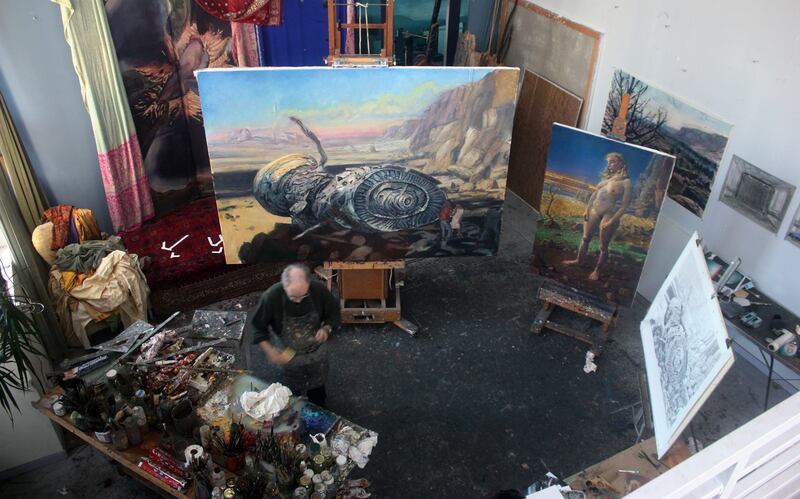Hendrik “Henk” Pieter Pander, the Dutch-born visionary hailed as one of greatest artists in the Pacific Northwest, died Friday. He was 85.
Judy Margles, executive director of the Oregon Jewish Museum and Center for Holocaust Education and a friend of Pander’s, told Oregon ArtsWatch that he passed away peacefully while sleeping. He was diagnosed with inoperable brain cancer this January.
Pander was born in 1937, in the Dutch city of Haarlem. His paintings, which often explored his childhood memories of the Nazi occupation, were acclaimed for confronting humanity’s darkest impulses (and were often featured at the Oregon Jewish Museum).

In 1965, when he was 27, Pander moved to Portland. The world around him fed his creativity, as he used watercolors, oil paintings and other forms to capture the grandeur of the Oregon landscape.
While Pander spent nearly 60 years in Oregon, he never abandoned his ties to his European heritage. When the famed Rijksmuseum reopened after a decade of renovation in 2013, Pander was a guest of honor.
No one painting can convey the impact of Pander’s legacy. But he is particularly famous for New World, a watercolor he painted in 1997. A 40-by-60-inch panting showing a field of forsaken fighter planes, New World remains one of his signature creations, and has been called one of the 100 greatest works in the Rijksmuseum’s collection.
So great was Pander’s commitment to his craft that he continued painting until shortly before his death. His final exhibit, titled The Ordeal (another meditation on his wartime childhood), was displayed in January at Clackamas Community College’s Alexander Gallery. During the pandemic, he painted images of Portland as a barricaded war zone occupied by federal agents. His portrait of former City Commissioner Jo Ann Hardesty was recently added to the collection at the Portland Art Museum.
Pander is survived by his wife, Jodi Stern Pander, and his sons, the filmmakers Jacob and Arnold.
See 101 of his paintings here.

